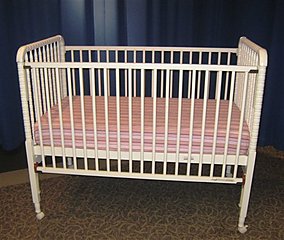In an alarming development, the recent recall of two million drop side cribs has underscored escalating safety concerns regarding infant bedding products. These cribs, which feature movable sides intended to facilitate easy access to the child, have been linked to numerous tragic incidents and serious injuries. This unsettling trend has ignited a widespread discourse on infant safety standards and the efficacy of regulatory oversight in the industry.
The pivotal issue surrounding drop side cribs lies in their design. The movable side, meant to provide convenience for parents, often malfunctions, creating hazardous gaps that can ensnare a child’s head or body. This defect has been implicated in several cases of suffocation, prompting consumer protection agencies to act decisively. With multiple reports echoing the dangers associated with these cribs, it has become imperative for caregivers to reassess their reliance on such products.
Manufacturers have been under scrutiny for not only the design flaws but also for their failure to heed warning signs from previous recalls. The once-popular drop side crib has transformed from a symbol of nursery aesthetics into an emblem of parental anxiety. This phenomenon reflects a broader societal rift; the balance between convenience and safety is in constant flux, challenging consumers to grapple with the implications of their purchasing choices.
As one delves deeper into the rationale behind the fascination with these cribs, an underlying narrative emerges. The allure of these cribs stems not solely from their functionality but from the ideals they embody—ease, accessibility, and autonomy in parenting. However, behind this veneer lies a grave reality; convenience can often eclipse the paramount importance of safety. This paradox is illustrative of a larger dilemma facing modern parents, caught in the throes of a consumer culture that prioritizes aesthetics over functionality.
The recall serves as a stark reminder of the critical need for vigilance. Parents must not only monitor the physical integrity of their baby’s environment but also remain informed about product safety standards. Engaging with community resources and advocacy groups can not only provide guidance but also empower parents to make judicious decisions concerning infant care. The recall of these two million cribs has catalyzed a national conversation about the safety of baby products, prompting a reevaluation of existing regulations and the responsibilities of manufacturers.
In conclusion, the intricate interplay of safety and design in baby products cannot be understated. The recall of drop side cribs highlights a pressing issue that escalates as manufacturers and consumers navigate the precarious landscape of child safety. As the dialogue on this topic evolves, it is crucial for parents to remain vigilant, ensuring that their choices are guided by informed understanding rather than mere convenience.
